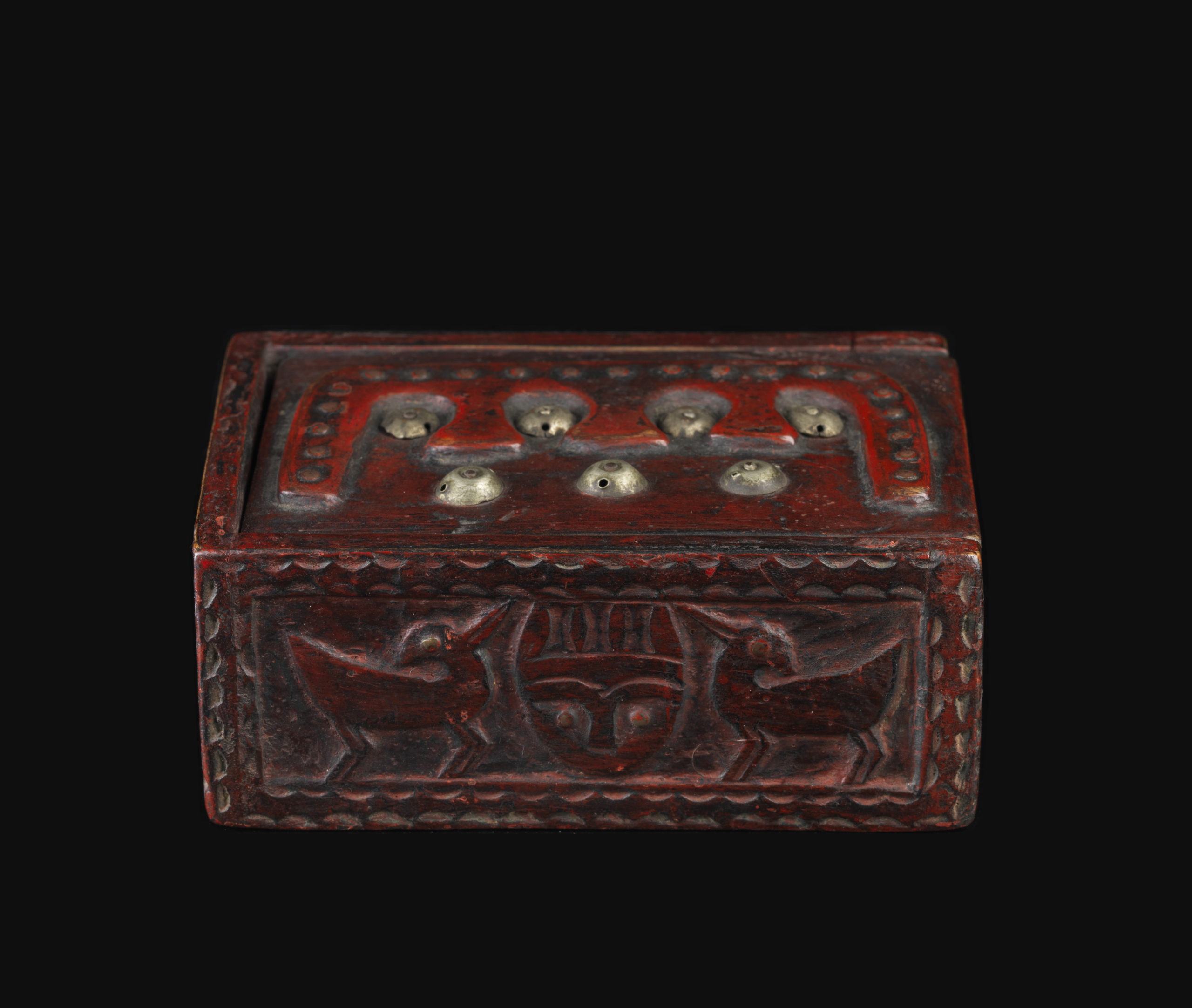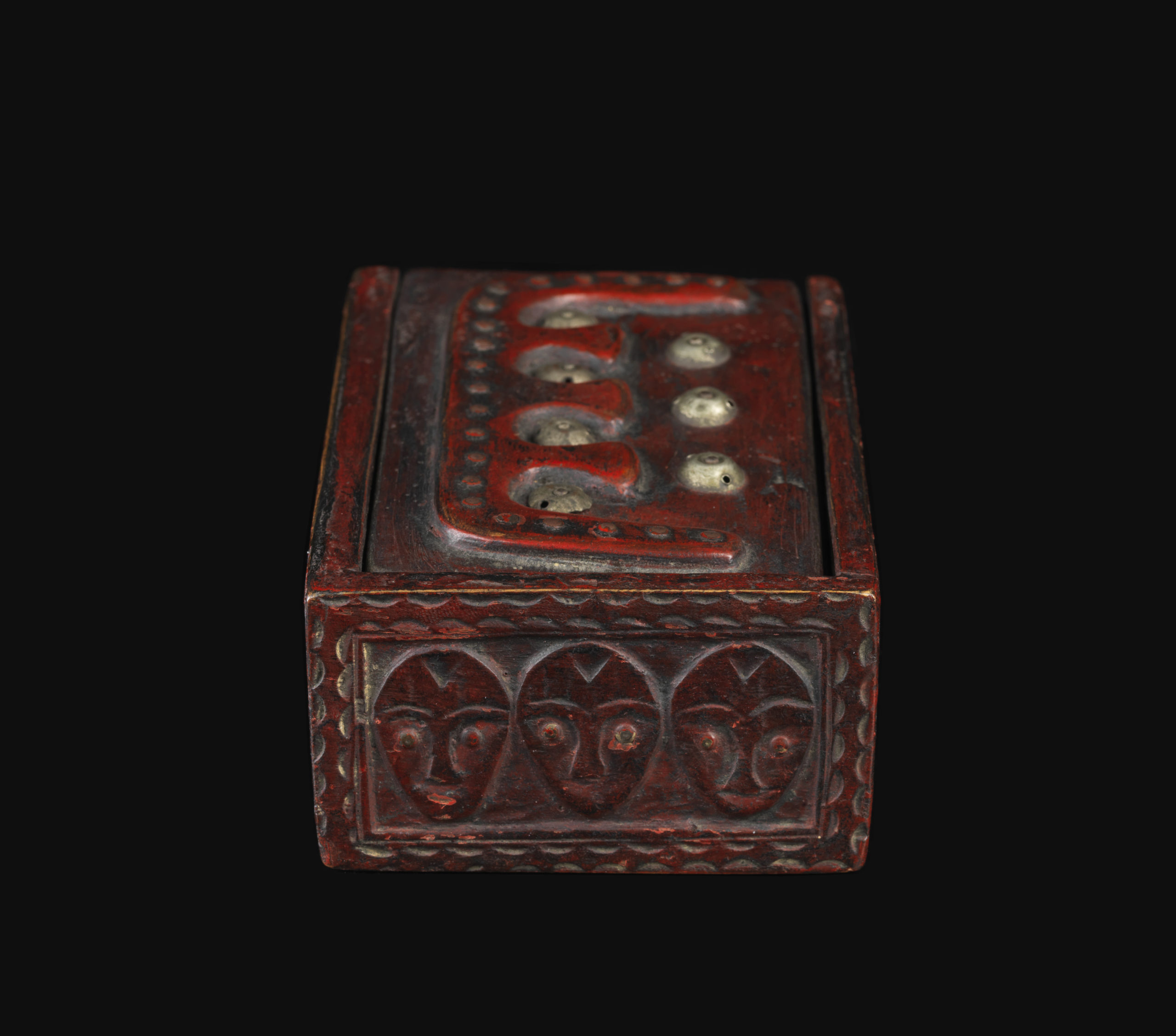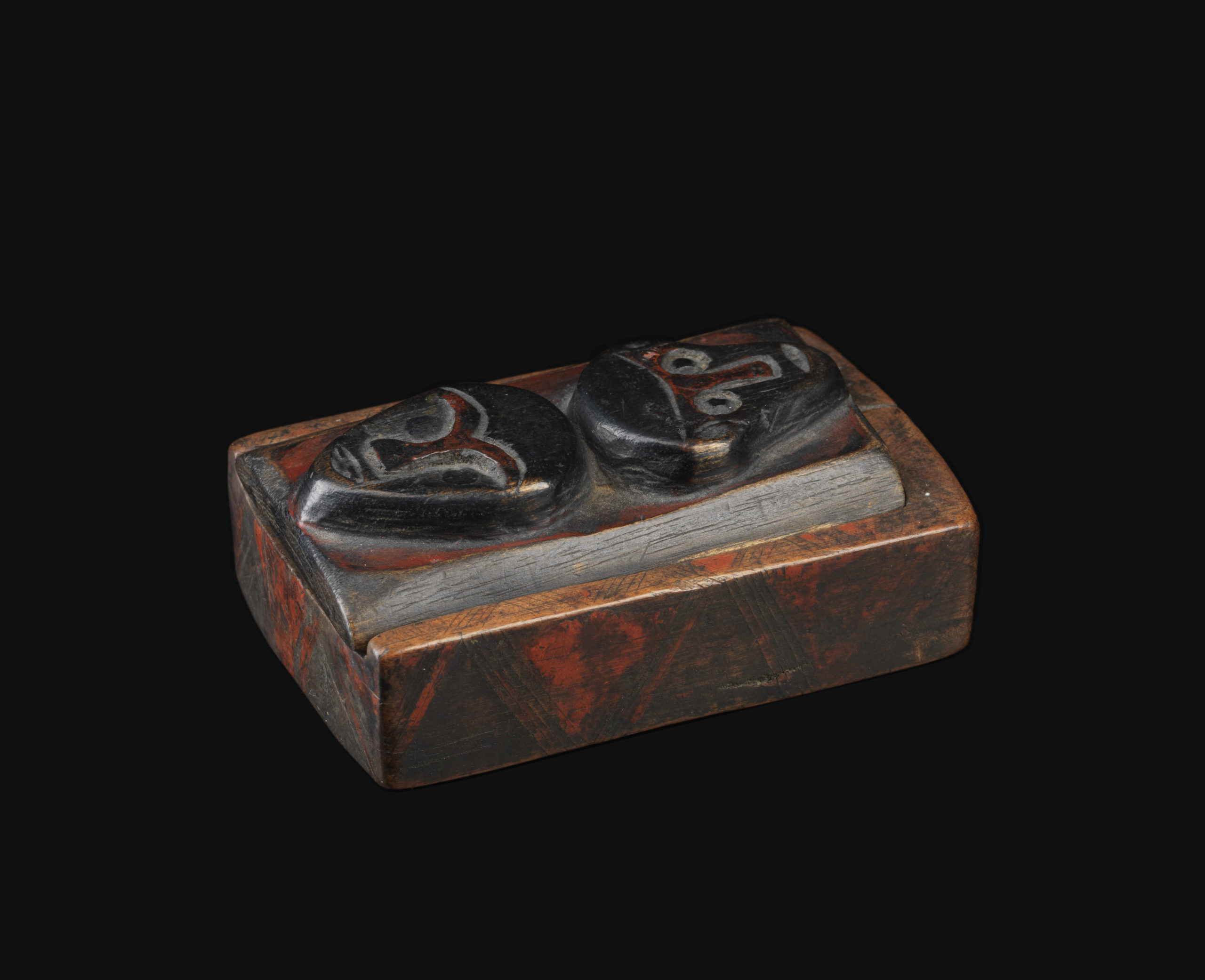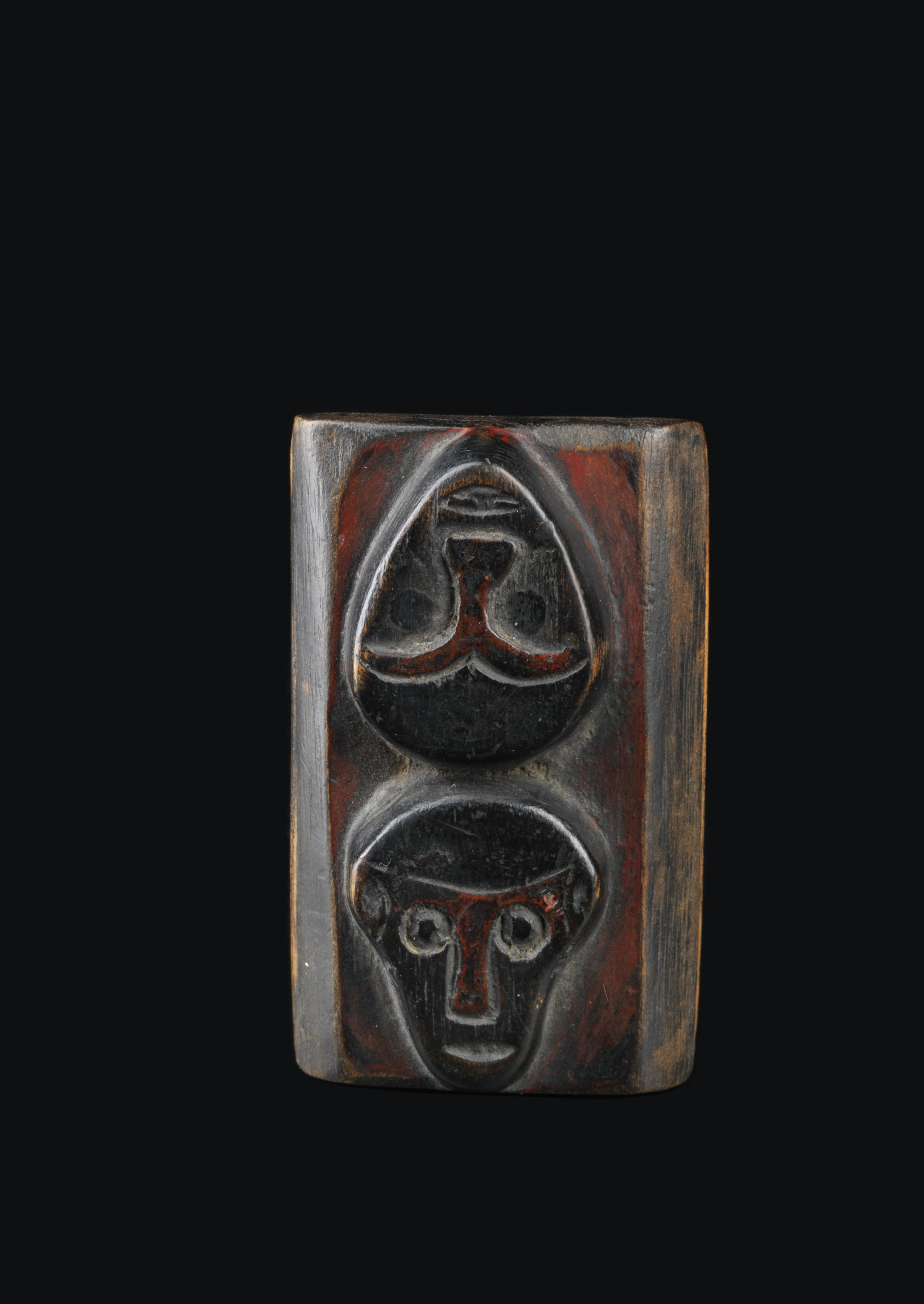Amulet Box
| Object | Amulet box “kanepochi” |
| Culture | Formosa / Southern, Paiwan groups |
| Time | 19th century |
| Dimensions | L 10,50 cm, h 4,10 cm, w 7,30 cm |
| Material | Wood, lacquer, brass |
This box consists of a carved wooden box with a sliding lid. On the lid are small raised brass ornaments. The pattern on the lid reminds of a boat motif. On the outside, human heads and animal motifs are carved into the wooden surface. The wooden box is decorated with red lacquer.
Small amulet boxes like the presented box were intended as containers for talismans, like holy stones (azure pearls) from the Paiwan tribal land, or precious pearls. At the festivals for the deification of high-ranking ancestors certain consecration offerings were offered, mostly old pearls of Chinese or Western origin. These “divination ceremonies” had the purpose of raising the rank of the ancestors in the hereafter. They were part of the cyclical festivals that maintained and strengthened the social order. The Bataul group within the Paiwan conduct the maleveq festival every five years, where the spirits of the ancestors are invited and presented with gifts. The votive offerings, which are kept in precious boxes like the one presented here, can be used several times. Demuljat is a part of the maleveq, where the participants symbolically bump balls made of plant fibre with bamboo sticks, symbolising human heads. This is a reminder that in the past, before these great deification festivals, head hunting was required in order to send life into the afterlife, which then benefited the community through renewal rituals. The box shows the head of a high-ranking ancestor (recognizable by the eagle feather ornament) and two bird figures who, as messengers of the gods, can move between the weaving planes and maintain the connection between aristocracy and ancestral sphere.
Shamanism is an essential part of the Paiwan culture. Shamanism is practiced professionally and inherited over generations on the female line. The shamans of the Paiwan were usually women, sometimes also hermaphrodites. Since the number of shamans is constantly decreasing, in recent times the foundation and maintenance of shaman schools is promoted in order to preserve and maintain the traditional practices. The rituals include dances that correspond to the Japanese buto. The shamans are healers, mediums who let the voices of the ancestors speak from themselves, and pastoral workers. The traditional Paiwan society was characterised by a caste system in which the chiefs and their families were at the head of the communities. This was followed by the caste of shamans, nobles and warriors, while the rest of the tribe was more or less the lowest caste of the common people. Changing from one caste to another was partly possible through marriage. In some clans, however, it was forbidden to marry people outside their own clan. Traditionally, a person’s clothing, materials and the decoration of possessions were based on caste affiliation. Eagle feathers as headdress were only worn by the high nobility. The depiction of the snake Mura, which can be found especially on swords, was also only allowed to be worn by the nobility.
Amulet box
| Object | Amulet box “kanepochi” |
| Culture | Formosa / Southern, Paiwan groups |
| Time | 19th century |
| Dimensions | L 7,20 cm, h 2,80 cm, w 4,00 cm |
| Material | Wood, lacquer |
This amulet box represents a comparative example. It is carved from wood, has a sliding lid and is covered with red lacquer. The two opposite heads are differentiated in the elaboration, shown is a living and a dead face. The small box has a nice haptic, which indicates a long use. It was also used to store talismans, pearls or holy stones.
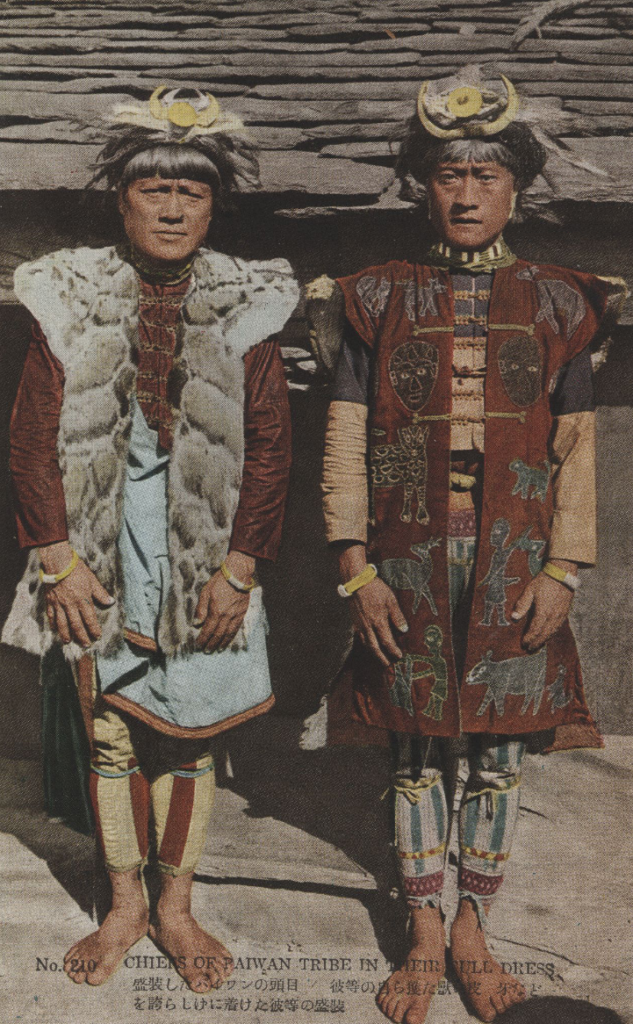

Paiwan chiefs in distinctive clothing with leopard skin and embroidered jacket with head-symbols of Paiwan nobility.
http://hdl.handle.net/10385/cc08hg88v




